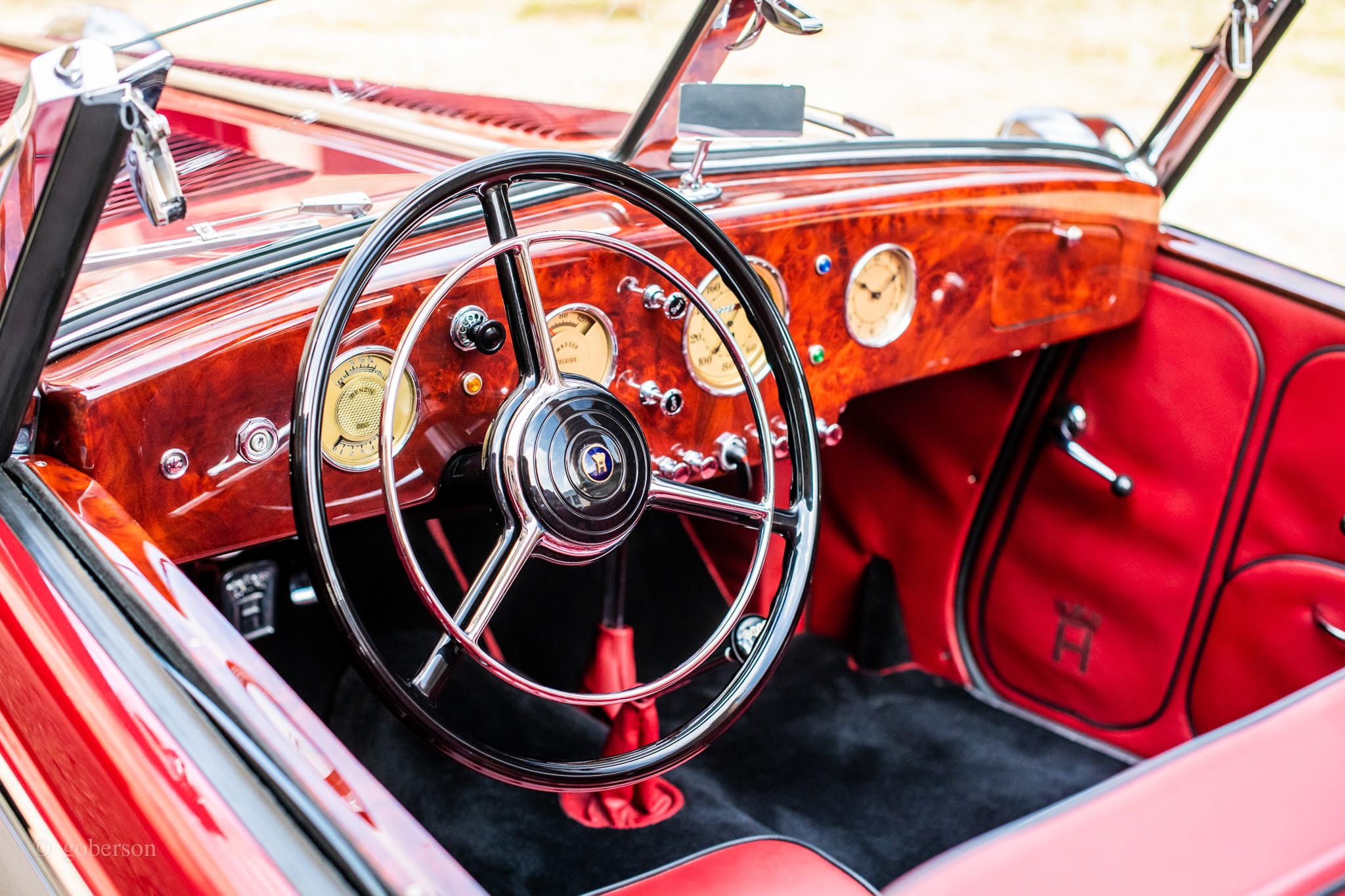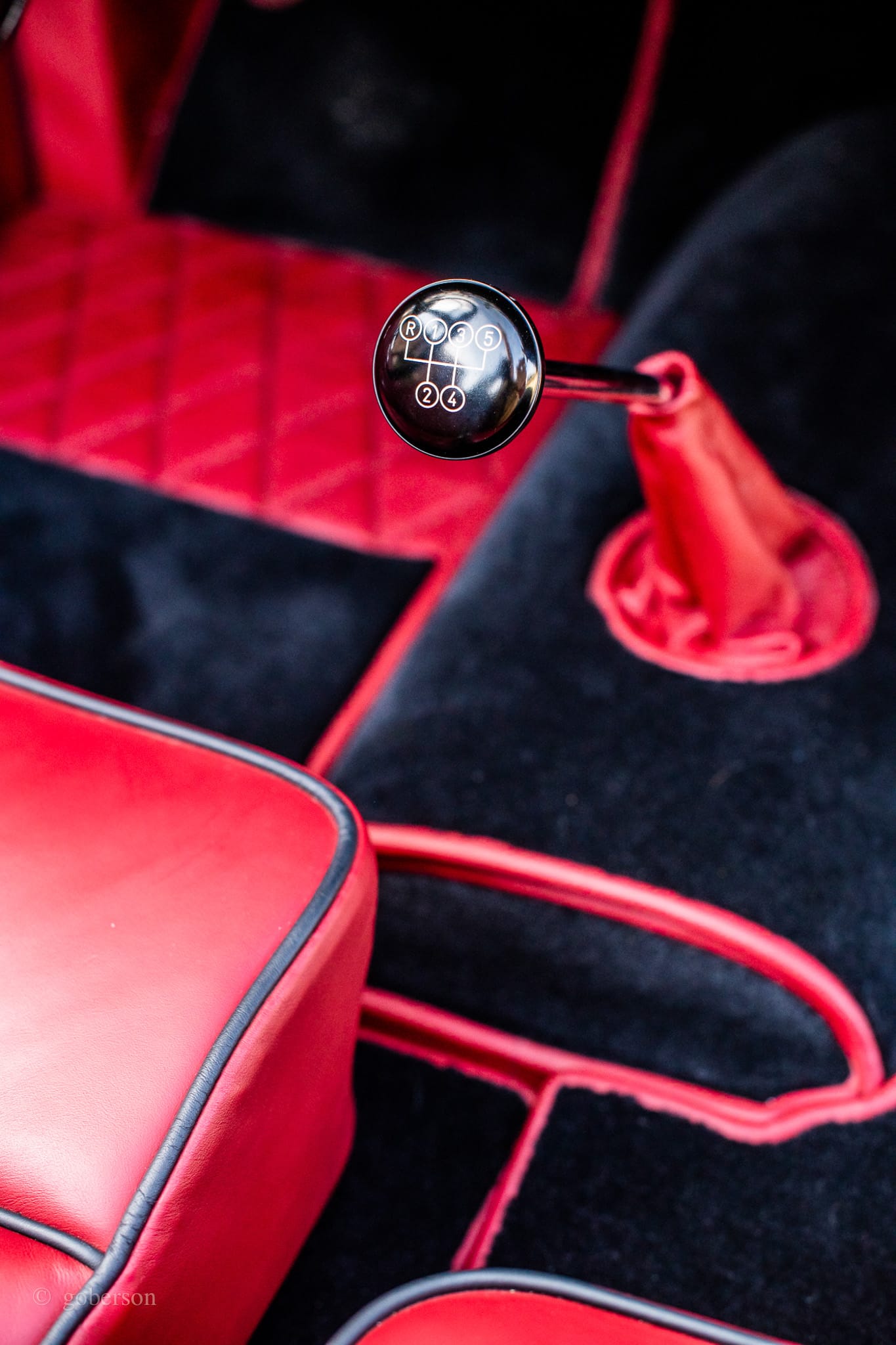Only a handful of Horch 853 Spezialroadsters were built, making the car extremely rare and valuable. Today, the car is considered one of the most desirable classic cars in the world. Thanks in part to their rarity, craftsmanship, and historical significance.The Horch 853 Spezialroadster is a symbol not only of the technical progress and craftsmanship of the 1930s, but also of the culture of luxury and exclusivity that prevailed among the European elite before World War II. It is one of those cars that represent an era and still evoke admiration for their beauty and technical performance.
The car was purchased in the Ukraine in 2009 by Horch-Classic, which then embarked on a seven-year restoration that took thousands of working hours to complete. It was decided to build a tool room copy body in the style of legendary Spezialroadster. Horch-Classic researched in numerous archives (and also private sources) to find original factory photographs.Utilising Horch-Classic’s long term experience, researched photographic documentation, and in-house made templates, a three-dimensional body buck was fabricated. This buck was then covered in fabric to create a first impression of the body’s lines and proportions. Numerous changes had to be made to the original buck before the form and proportions were right; only then could the construction of the wooden body frame begin.
Templates were again used to transfer the buck’s shape to the wooden frame, with lots of trial fittings until the right shape and form had been achieved. Using a laser spirit level, the frame components were then glued together and screwed onto the chassis. Then the individual components of the metal body were fabricated, measured again and welded together. The Horch chassis frame had already been cleaned, measured and the metal checked for thickness and corrosion. Parts of the frame which showed either too much corrosion or were deemed too thin were replaced and then primed and painted with several coats.
From the start it was considered very important, not only to achieve perfect harmony of the body colour and interior, but also to arrive at a period-correct look for the car as a result. Accordingly, a base colour of silver metallic was chosen, which changes under different lighting conditions from a pure silver to a silver with a slight red tinge. To emphasise the car’s awing lines, a coach line was applied by hand to the mudguards, bonnet, doors and the rear of the body.
The car’s interior was clad in high quality black velour carpet, which was piped in the same red leather as was used for the seats. The leather for the seats itself was chosen for its period-authentic surface texture. The Horch logo has been stitched into the back of the front seats and the door cards with a black thread. A great deal of effort went into the Alcantara hood lining.The dashboard, made from a single piece of wood, has been covered with Canadian burr veneer that has been lacquered and polished to provide a mirror-like finish. The interior woodwork also shows a slight red tinge, which harmonises beautifully with the interior and exterior colours. The Horch Logo on the radiator and the boot lid were plated with 24 carat gold by a jeweller. All chromed parts were either prepared and re-chromed, or where necessary newly fabricated and plated.
The original engine, front and rear axles, differential, gearbox and steering were dismantled, measured and overhauled where necessary. The engine was completely dismantled and all parts measured and checked. New bearings were fitted, new pistons installed, and the camshaft and valve gear overhauled. New seals were fitted to the valve guides, and modern radial oil seals fitted to the engine at front and rear. The crankshaft was finely balanced together with the flywheel. Dynamometer tested for some 20 hours before fitting to the car, the engine runs very smoothly, while a comprehensively overhauled five-speed gearbox enhances the already pleasurable driving experience and helps to keep the engine revs low at cruising speeds. A new wiring loom has been made and covered with woven cotton to replicate the appearance of the original. It goes without saying that safety-critical components for the steering and hydraulic brakes were renewed also.
A quantity of marque-related literature comes with it to include an owner’s manual (copy). It is European taxes paid & currently residing in a prominent European collection. 3 thick leather bound binders come with the car detailing its fastidious restoration. Euros 28,000 has just been spent upon the car to put it in tip top condition for which bills are on file. This was to prepare the car for the 2024 Swiss chateau Coppet Concours d’Elegance at which the participation was rewarded with the elegance trophy.



